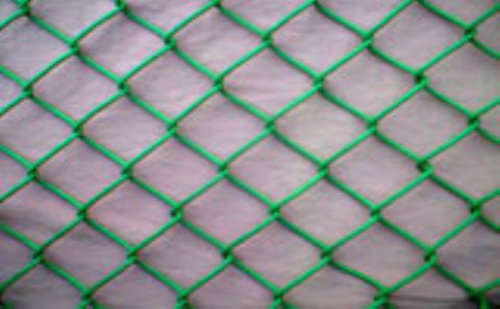Introduction: Wire mesh is a traditional industrial product in China and has a wide range of applications in many fields such as scientific research, production, and life. With the rapid development of science and technology, the current use of screen and petroleum, chemical, automotive, paper, food, construction, aviation, aerospace and other industries and high-tech fields.

As fillers are widely used in packed beds and packed towers.
Cracks: Longitudinal cracks, cracks, and cracks appear on the surface of the wire.
Splitting (stitching): The surface of the wire is cracked by visible small transverse strips, showing a tongue-like or other shape of the punctured layer: the wire is partially or long in the longitudinal direction**
Scab: The yellow bismuth oxide that appears on the surface of the wire. White lime marks: The small grooves or ribs that appear on the wire surface in the longitudinal direction, and those that are slight make the surface appear shiny and shiny.
Fold: The metal overlap along the length of the wire surface is now visible. It is often straight, but it is also curved or zigzag. In metallographic examination, iron oxide inclusions and decarburized layers are usually present in the folds.
Concave: Local depression on the surface of the wire.
Rust: Partial and overall oxidation of the wire surface.
Pitches: Dots or patches of pits that occur when the surface of the wire is severely oxidized.
Slub: The length of the wire is cyclically uneven and its shape resembles bamboo.
Spiral: In the process of straightening the steel wire, a thread-like roll mark appears on the surface.
Oxidation: Oxidation of the surface of the steel wire in contact with high-temperature oxidation furnace gases produces a hard, brittle oxide.
Oxide film: A thin layer of dense oxide is formed on the surface of the steel wire. This oxide is generally not easily broken. It can only partially peel off when it is bent or deformed.
Oxidation: The surface of the wire produces a very thin layer of oxide tightly attached to the wire surface under conditions of bright heat treatment.
Decarburization layer: When the steel wire is heated, due to the role of carbon in the gas medium and the steel layer, the carbon content in the surface layer is reduced. The phenomenon that this surface layer carbon content is reduced is called decarburization.
Graphite carbon: Part or all of the carbon in the steel is analyzed in a free state. This free carbon is stony carbon.
Crease: Partially folded on the mesh surface, forming an irreversible impression.
Holes: There are multiple warps or wefts on the screen.
Corrosion: corrosion on the surface of the mesh,
Rust spots: green, brown, or discolored spots appear on the mesh surface.
Broken wire: The meridian or weft thread on the surface of the mesh must be disconnected.
Mosquito mouth: The metal wire makes a circle, twists, and empties the mesh surface.
Top buckle: poor warp joints, top out of the net surface.
Weft reduction: Local cubic meters of weft are bent and the mesh is deformed.
Filament: Two or more wires are woven together in parallel.
Jumping wire (jump shuttle): warp or weft cross stitching error.
Loose wire: Loose displacement of individual warp or weft threads.
Miscellaneous materials weave in: foreign material weaves in the net.
Cloud weaving: Overlapping wefts or soft and hard inhomogeneities create irregular cloud-like patterns.
Drum kits: The network surface bulges out.
Double line: Warp or weft overlap.
Size hole: uneven mesh mesh size.
Sparse files: The individual meshes of the mesh are suddenly or too small.
Loose edge: The web is wavy and bulging.
Wire diameter - is the diameter of the wire;
Warp - all longitudinal weaving lines;
Latitude - all horizontal weaving lines;
Number of meshes - the number of meshes within a length of 1 inch;
Density - Number of meshes in the length of -1 cm Mesh - Measure the distance between two warp threads or two weft threads - The vertical distance (MM) between the warp and the tolerance line at the heald at the hedging angle
Public line--Tolerance on the line connecting the front and rear chestnuts (rollers)--The warp at the heald at the heald level is higher than the tolerance line below the tolerance line--Below the tolerance line is called the tolerance at the lower tolerance and zero tolerance--The coincidence with the tolerance line is called zero Tolerance angle - the distance between the upper heel and lower heel after opening of the heald frame - (different angle time) - the distance between the steel weir and the long weft point at the heel
CNC Cutting is our specialiity. Smooth cutting, countersinking, chamfering are available with beautiful surface and high precision according to your drawings or requirements. Both Silk screen pringting and Inlay logo are offered.Confidentiality is as important as quality.We are Protecting every customers` design and products. If you need, we could sign NDA agreement as well.
Just enter your request in the Request Special Services section on the product page when interesting in a product, and pricing will be emailed for approval.
CNC Cutting Service And Logo Printing
Cnc Cutting Service,Logo Printing,Cnc Cutting Parts Service,Design Logo Printed
Hobby Carbon CNC Technology(Shenzhen) Limited , https://www.hobbycarbon.com